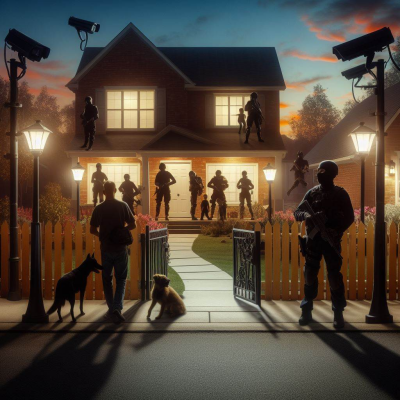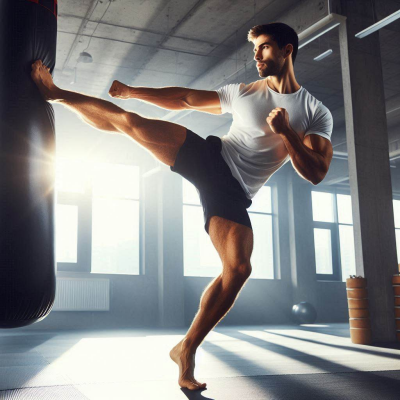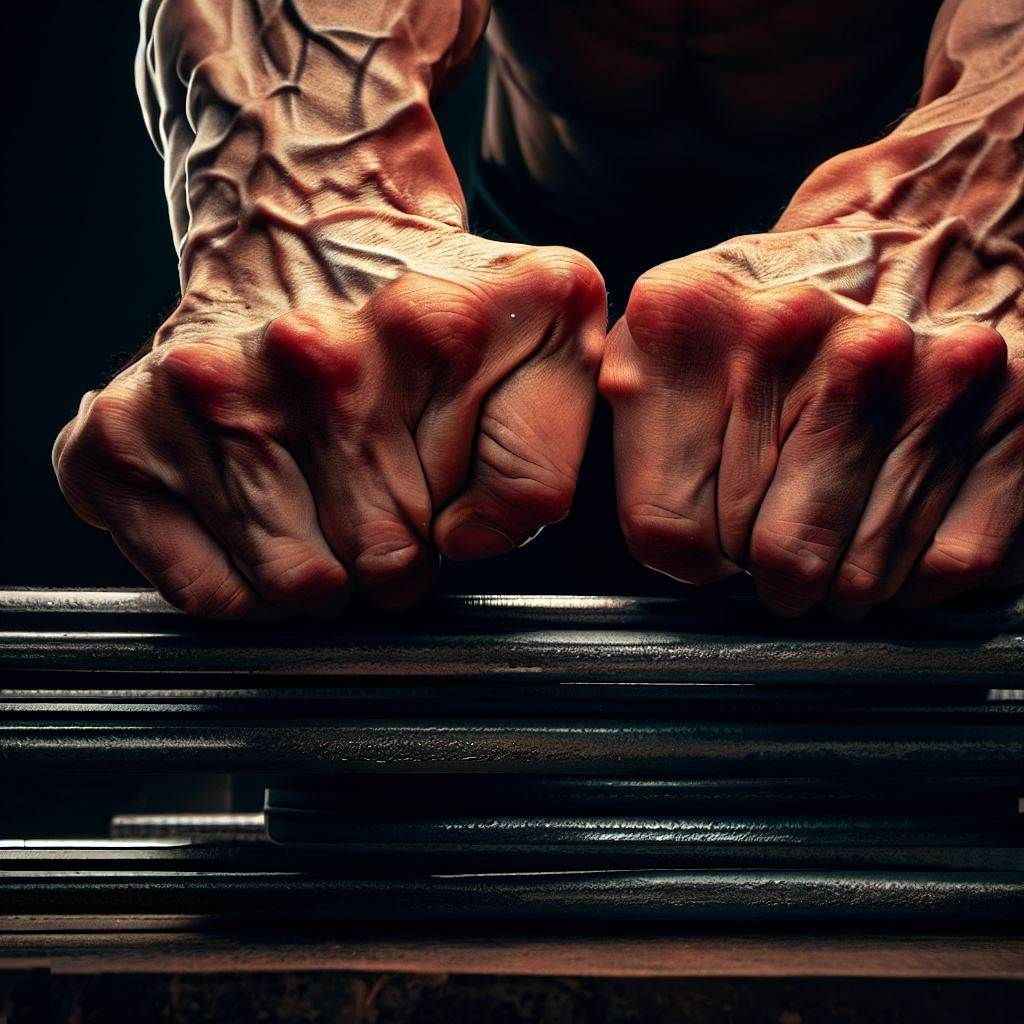Violence can happen anywhere and at any time, and being unprepared can have devastating consequences. In today’s society, it is becoming increasingly important to be mentally and physically ready to defend oneself. The ability to protect oneself is not only a matter of physical strength but also of mental toughness and preparedness.
This article aims to provide practical advice on how to unleash your inner fighter and be prepared for violence. The author, a personal trainer and founder of a strength website, draws on personal experience to emphasize the importance of being mentally and physically prepared for violence.
By sharing his own story of being pushed around and learning how to become tough, the author highlights the value of developing a fighter’s mindset and physical skills to defend oneself in high-pressure situations. The article provides valuable insights on how to cultivate a warrior’s mentality and physical strength to ensure that you are ready to face violence head-on.
Key Takeaways
 Violence can happen to anyone at any time, and society has become weakened, giving power to criminals.
Violence can happen to anyone at any time, and society has become weakened, giving power to criminals.- Police officers and military personnel have a better understanding of violence than ordinary citizens.
- Mistakes made in a violent encounter can be serious and even deadly, and scare tactics are often used to promote self-defense training.
- Individuals need to be mentally and physically prepared to defend themselves, and physical strength and mental toughness are important for self-defense.
Importance of Preparedness
The text emphasizes the significance of being ready for a violent attack and suggests that individuals need to be mentally and physically prepared to defend themselves.
The author argues that violence is a common occurrence in society and most people do not know how to defend themselves in a high-pressure situation.
To survive and defend oneself in any situation, the text mentions that there is a ‘number one move’ that can be used. However, mistakes made in a violent encounter can be serious and even deadly, as the author warns.
To be prepared for violence, individuals need to learn survival tactics and self-defense techniques.
The author suggests that police officers and military personnel have a better understanding of violence than ordinary citizens, but every individual should be mentally and physically ready to defend themselves.
The text implies that violence can happen to anyone at any time, so it is important to be ready for any situation.
Ultimately, the author emphasizes the importance of being prepared for a violent attack, highlighting the need to learn survival tactics and self-defense techniques to increase the chances of survival.
Society’s Perception of Violence
Society’s view of violent situations is often inadequate, as most individuals lack the knowledge and skills necessary to defend themselves in such circumstances. This is partly due to the fact that society tends to normalize violence, portraying it as a common occurrence and something that individuals should learn to accept.
However, this normalization of violence is problematic as it leads to a desensitization towards violence and a lack of preparation for it.
To address societal attitudes towards violence, individuals must first acknowledge that violence is a serious and potentially life-threatening issue that requires preparation and training. This can be done by taking the following steps:
1. Educating oneself about the different types of violence and how to recognize them.
2. Seeking out training programs or classes that teach self-defense and how to react in high-pressure situations.
3. Practicing situational awareness and being prepared for potential dangers.
4. Overcoming the fear of violence by mentally and physically preparing oneself to defend against it.
By taking these steps, individuals can better prepare themselves for violent situations and help shift societal attitudes towards violence from one of normalization to one of preparedness and prevention.
Mental and Physical Preparedness
Individuals can increase their chances of survival in a violent encounter by developing both their mental and physical preparedness.
Mental toughness is an essential aspect of self-defense, as it enables individuals to stay calm and focused under intense pressure. This can be achieved by practicing visualization techniques, such as imagining different scenarios and how one would respond to them. Additionally, individuals can build their mental toughness by exposing themselves to uncomfortable situations, such as through self-defense training or other high-pressure activities.
Physical strength is also crucial for self-defense. Regular exercise and strength training can improve one’s ability to defend themselves physically. It is important to note, however, that physical strength alone is not enough. Techniques and strategies for self-defense must also be learned and practiced.
By combining mental toughness and physical strength with proper training, individuals can increase their chances of survival in a violent encounter.
What are some common misconceptions about self-defense and preparedness for violent situations?
Misconceptions about self-defense and preparedness for violent situations often stem from a lack of awareness and understanding of the importance of being mentally and physically prepared.
One common misconception is that carrying self-defense tools, such as pepper spray or a gun, is enough to protect oneself from an attacker. However, relying solely on these tools can lead to a false sense of security and may not be effective in all situations.
Another misconception is that self-defense training is only necessary for certain individuals, such as women or those living in high-crime areas. In reality, violence can happen to anyone at any time, and being prepared with self-defense training can increase one’s chances of survival.
It is important to recognize the value of awareness and mental preparedness in addition to physical strength and tools when it comes to self-defense.
How can mental preparedness be developed and practiced in everyday life?
There is an old saying that ‘practice makes perfect,’ and this applies to mental preparedness as well.
Mindset training and visualization techniques can help individuals develop mental toughness and prepare for high-pressure situations.
Practicing mental preparedness in everyday life can involve setting small goals and pushing oneself to achieve them, using positive self-talk and affirmations, and visualizing successful outcomes.
It is important to remember that mental preparedness is not just about reacting to a violent encounter, but also about being able to handle stress and adversity in all areas of life.
By consistently practicing mental preparedness, individuals can build confidence, resilience, and a sense of control over their lives.
What are some non-physical strategies for defending oneself in a violent encounter?
In a violent encounter, non-physical strategies for defending oneself include situational awareness and verbal de-escalation.
Situational awareness involves being mindful of one’s surroundings and potential threats. This includes being alert to suspicious behavior, avoiding isolated areas, and being prepared to react quickly if necessary.
Verbal de-escalation involves using calm and assertive communication to defuse a potentially violent situation. This may involve using de-escalating phrases, such as acknowledging the other person’s feelings and concerns, and avoiding confrontational language or gestures.
These non-physical strategies can be effective in preventing a violent encounter from escalating and can potentially save lives.
Are there any legal considerations to keep in mind when defending oneself in a violent situation?
In the event of a violent situation, it is important to understand the legal ramifications of defending oneself. Self-defense laws vary by state and country, and it is crucial to be aware of these laws before taking any action.
In general, self-defense is only justifiable when there is an imminent threat of harm and the force used is proportional to the threat. It is important to note that mistakes made during a violent encounter can have serious legal consequences, and it is therefore recommended to seek professional guidance on self-defense laws and tactics.
Ultimately, preparation and knowledge of one’s legal rights and limitations are key to effectively defending oneself in a violent situation.
How can self-defense training be tailored to meet the needs of individuals with physical limitations or disabilities?
Adaptive techniques and empowerment strategies can be used to tailor self-defense training to individuals with physical limitations or disabilities.
These techniques can include modifications to traditional self-defense moves to accommodate physical limitations, such as using leverage instead of brute strength.
Empowerment strategies can include building confidence and mental toughness through visualization and role-playing exercises.
It is important for trainers to work closely with individuals to understand their specific needs and limitations, and to develop personalized training plans that focus on practical skills that can be used in real-life situations.
By empowering individuals with physical limitations or disabilities through these adaptive techniques and strategies, they can gain the confidence and skills needed to defend themselves in potentially violent situations.
Violence has become an all-too-common occurrence in our society, and it is crucial that we are mentally and physically prepared to defend ourselves if needed. The importance of being prepared cannot be overstated, as it can mean the difference between life and death. In this article, we have discussed the societal perception of violence and how to become mentally and physically prepared for it.
It is alarming to note that in the United States, a violent crime occurs every 25 seconds, according to the National Crime Victimization Survey. This statistic is a stark reminder of the prevalence of violence in our society and the need for preparedness.
Being mentally and physically prepared for violence involves developing a mindset of confidence and alertness, as well as training in self-defense techniques and physical fitness. It is essential to remember that being prepared does not mean living in fear, but rather being empowered to protect ourselves and our loved ones in the face of danger.
Unleashing our inner fighter and being prepared for violence is a necessary step in today’s society. By developing mental and physical preparedness, we can increase our chances of survival and protect ourselves and those around us. Let us take proactive steps to become confident, alert, and physically fit, so that we can face any situation with strength and resilience.
Hopefully you’ll never need this in real life but I think it’s best to be prepared, just in case.
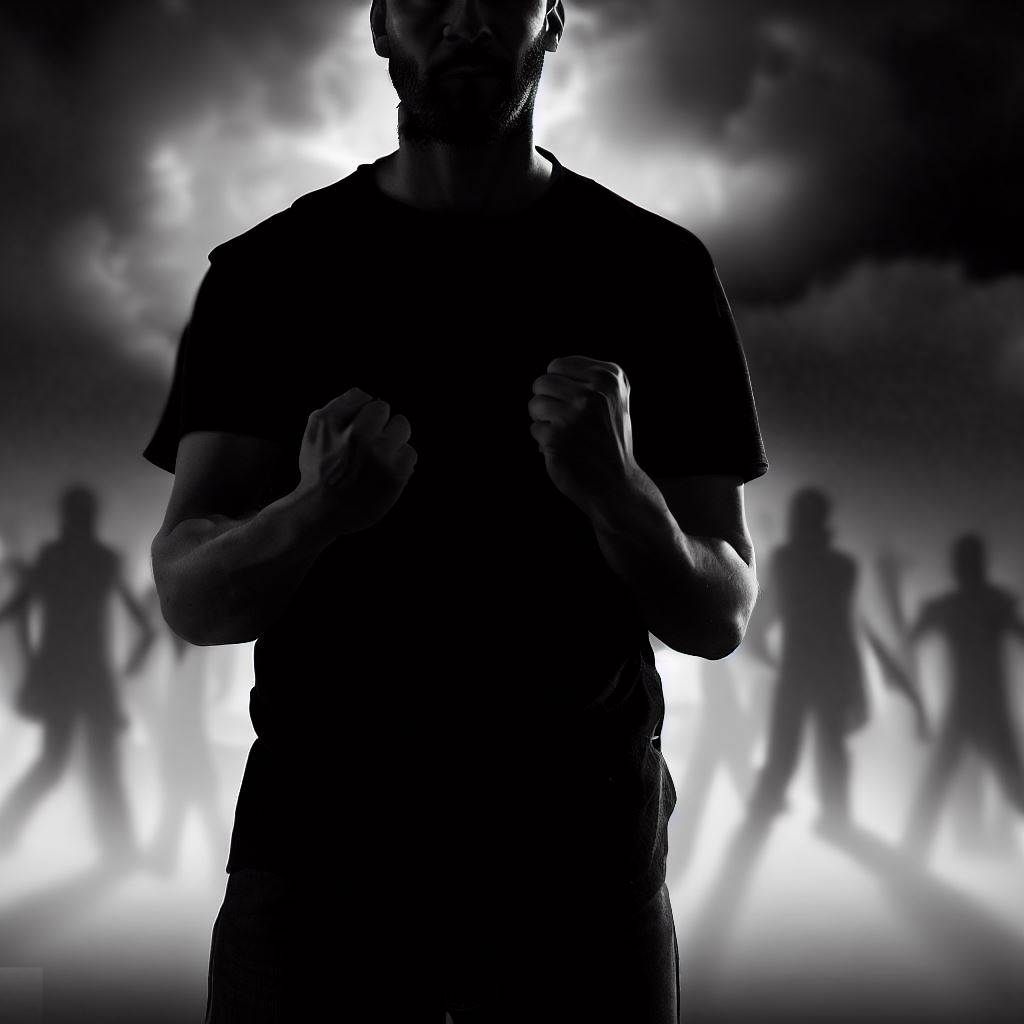
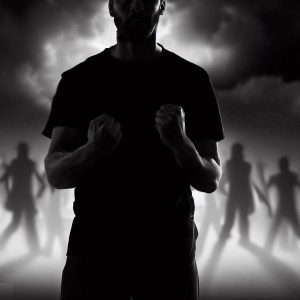 Violence can happen to anyone at any time, and society has become weakened, giving power to criminals.
Violence can happen to anyone at any time, and society has become weakened, giving power to criminals.